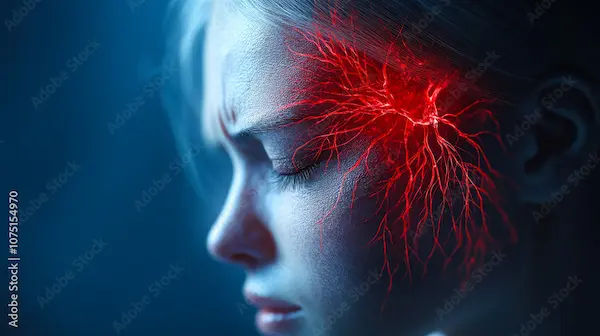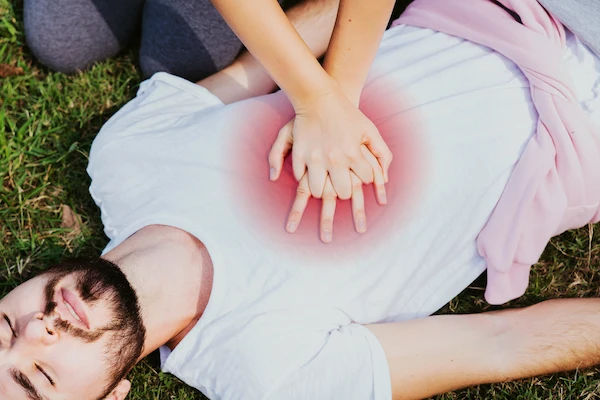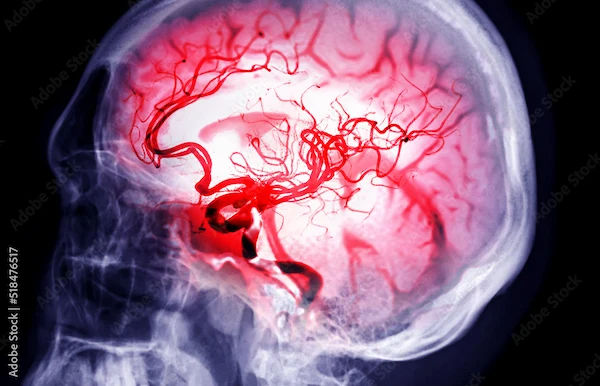Guide to Stroke You Need To Know More About It
Know about the stroke, what it is, types, signs, symptoms, causes, diagnosis and treatment options.
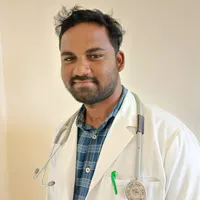
Written by Dr. Rohinipriyanka Pondugula
Reviewed by Dr. M L Ezhilarasan MBBS
Last updated on 6th Oct, 2025

Introduction
A stroke is a medical emergency that strikes suddenly, often described as a "brain attack." It occurs when the vital blood supply to part of your brain is interrupted or reduced, depriving brain tissue of oxygen and nutrients. Within minutes, brain cells begin to die. The effects can be devastating, leading to long-term disability or even death. However, there is a powerful beacon of hope: rapid action and advanced medical knowledge can significantly improve outcomes. This guide is designed to empower you with essential knowledge about stroke from recognising the earliest warning signs to understanding the journey of recovery and the powerful steps you can take toward prevention. Knowledge is your first line of defense.
What Exactly is a Stroke? A Closer Look at the Brain's Blood Supply
At its core, a stroke is a disruption of the brain's circulatory system. Your brain is the command centre of your body, controlling everything from movement and speech to your heartbeat and emotions. To function correctly, it requires a constant, rich supply of oxygen and nutrients delivered by blood through a network of arteries.
Consult a Top Cardiologist for Personalised Advice
The Critical Role of Blood Flow to the Brain
Think of your brain's arteries as vital pipelines. If one of these pipelines gets blocked by a clot or bursts open, the downstream brain tissue is starved of oxygen. This triggers a cascade of damage. The longer the blood flow is compromised, the more extensive the brain damage becomes. This damage is what causes the sudden symptoms associated with a stroke, such as weakness on one side of the body or difficulty speaking. Understanding this mechanism is key to grasping why every second counts.
Know the Signs: How to Recognise a Stroke Immediately
Recognising the symptoms of a stroke is the single most important factor in getting timely treatment. Public health
campaigns have successfully promoted an easy-to-remember acronym: FAST.
The FAST Acronym: A Lifesaving Tool (H3)
- F - Face Drooping: Ask the person to smile. Does one side of the face droop or is it numb? Is their smile uneven?
- A - Arm Weakness: Ask the person to raise both arms. Does one arm drift downward? Is there weakness or numbness in one arm?
- S - Speech Difficulty: Ask the person to repeat a simple sentence. Is their speech slurred or strange? Are they having trouble speaking or understanding you?
- T - Time to Call Emergency Services: If you observe any of these signs, even if they disappear, call for an ambulance immediately. Note the time when the symptoms first appeared.
Additional Stroke Symptoms You Shouldn't Ignore
Beyond FAST, be aware of other sudden symptoms that could indicate a stroke:
- Sudden numbness or weakness in the leg, face, or especially on one side of the body.
- Sudden confusion, trouble understanding, or disorientation.
- Sudden trouble seeing in one or both eyes.
- Sudden trouble walking, dizziness, loss of balance, or lack of coordination.
- Sudden, severe headache with no known cause, which could be a sign of a hemorrhagic stroke.
The Two Main Types of Stroke: Ischemic vs. Hemorrhagic
Understanding the type of stroke is crucial for determining the correct treatment. There are two primary categories.
Ischemic Stroke: The Most Common Type (Clots)
Accounting for about 87% of all strokes, an ischemic stroke happens when an artery supplying blood to the brain
becomes blocked. The blockage is typically caused by:
- Thrombotic Stroke: A blood clot (thrombus) forms in one of the arteries directly leading to the brain.
- Embolic Stroke: A blood clot or other debris forms elsewhere in the body (often the heart) and travels through the
bloodstream to lodge in a narrower brain artery.
Understanding Transient Ischemic Attack (TIA) or "Mini-Stroke"
A TIA produces stroke-like symptoms that typically last only a few minutes and cause no permanent damage. However,
a TIA is a major warning sign that a full-blown ischemic stroke may be imminent. It should never be ignored. Treat it
with the same urgency as a major stroke.
Hemorrhagic Stroke: When a Blood Vessel Bleeds
A hemorrhagic stroke occurs when a blood vessel in the brain leaks or ruptures. This can result from conditions such as
uncontrolled high blood pressure, overtreatment with blood thinners, or aneurysms (weak spots in blood vessel walls). The leaked blood puts pressure on brain cells, damaging them.
Who is at Risk? Key Risk Factors for a Stroke
Certain factors increase your likelihood of having a stroke. Some you can't change, but many are within your control.
Uncontrollable Risk Factors (Age, Family History)
- Age: Risk increases after age 55.
- Family History: Higher risk if a parent, grandparent, or sibling has had a stroke.
- Race: African Americans have a higher risk of death from a stroke.
- Sex: Women have a higher lifetime risk of stroke and are more likely to die from one.
Controllable Risk Factors (Lifestyle & Medical Conditions)
This is where you can take action. Key risk factors for stroke include:
- High Blood Pressure is the leading cause of stroke.
- Smoking: Damages blood vessels and increases clot formation.
- Diabetes: High blood sugar damages blood vessels over time.
- High Cholesterol: Contributes to plaque buildup in arteries (atherosclerosis).
- Physical Inactivity and Obesity.
- Atrial Fibrillation (AFib): An irregular heartbeat that can cause clots to form in the heart.
How is a Stroke Diagnosed? The Race Against Time
In the emergency room, doctors act quickly to confirm a stroke and its type. Key diagnostic tools include:
- Physical Examination: Checking for FAST symptoms and neurological function.
- Imaging Tests: A CT scan or MRI provides a detailed picture of the brain, showing bleeding or damaged areas.
- Blood Tests: To check clotting time, blood sugar, and other key markers.
Emergency Stroke Treatment: Clot-Busting Drugs and Surgical Procedures
Treatment depends entirely on whether the stroke is ischemic or hemorrhagic.
Treatment for an Ischemic Stroke
The goal is to quickly restore blood flow.
- TPA (Tissue Plasminogen Activator): A "clot-busting" drug that can dissolve the clot causing the stroke. It must be
administered within a few hours (typically 4.5) of symptom onset. - Endovascular Procedures: A catheter can be threaded through an artery to the clot to mechanically remove it. This is
known as a thrombectomy.
Treatment for a Hemorrhagic Stroke
The goal is to control bleeding and reduce pressure in the brain.
- Medications: To lower blood pressure, counteract blood thinners, and prevent seizures.
- Surgery: May be needed to repair blood vessel abnormalities (like an aneurysm) or remove blood and relieve pressure
on the brain.
If you or a loved one experiences stroke symptoms, immediate medical attention is critical. For ongoing neurological care and follow-up, consulting a specialist neurologist online with Apollo24|7 can provide convenient access to expert advice during the recovery phase.
The Road to Recovery: Stroke Rehabilitation and Long-Term Care
Recovery is a marathon, not a sprint. Stroke rehabilitation begins in the hospital and continues for months or years. The
goal is to help survivors regain as much independence as possible.
The Rehabilitation Team: Who Helps in Recovery?
This is a multidisciplinary effort involving physiatrists, physical and occupational therapists, speech-language
pathologists, and psychologists.
Common Therapies: Physical, Occupational, and Speech
- Physical Therapy: Focuses on improving movement, balance, and coordination.
- Occupational Therapy: Helps patients relearn daily activities like eating, bathing, and dressing.
- Speech Therapy: Aims to improve language skills and address swallowing difficulties (dysphagia).
Can You Prevent a Stroke? Proactive Steps to Protect Your Brain (H2)
The vast majority of strokes are preventable. A proactive approach to health is your best defense.
- Manage Blood Pressure: This is the most important step.
- Quit Smoking and Limit Alcohol.
- Control Diabetes and Cholesterol through diet, exercise, and medication.
- Maintain a Healthy Weight.
- Exercise Regularly (at least 150 minutes of moderate activity per week).
- Eat a Heart-Healthy Diet rich in fruits, vegetables, and whole grains, and low in saturated fat and salt.
Managing underlying conditions like high blood pressure and diabetes is crucial for prevention. Apollo24|7 offers
convenient home collection for tests like HbA1c for diabetes monitoring and lipid profiles for cholesterol, making it
easier to stay on top of your health.
Living Well After a Stroke: Support, Mindset, and Health Management
Life after a stroke involves adaptation. Support from family, friends, and stroke support groups is invaluable. A positive
mindset, coupled with strict adherence to medication and lifestyle changes, can dramatically improve quality of life and
reduce the risk of a second stroke.
Conclusion
A stroke is a formidable health event, but it is not an unbeatable one. The power to make a difference lies in awareness and action. By learning to recognise the signs using the FAST acronym, understanding the risk factors, and embracing a proactive lifestyle, you are not just a passive bystander; you are an active participant in safeguarding your brain health. Whether it's for yourself or a loved one, this knowledge empowers you to act swiftly in a crisis and make informed decisions for a healthier future. Share this information; it could save a life.
Consult a Top Cardiologist for Personalised Advice
Consult a Top Cardiologist for Personalised Advice

Dr. Tripti Deb
Cardiologist
40 Years • MBBS, MD, DM, FACC, FESC
Hyderabad
Apollo Hospitals Jubilee Hills, Hyderabad

Dr. Bhethala Sharan Prakash
General Physician/ Internal Medicine Specialist
5 Years • MBBS MD
Bengaluru
PRESTIGE SHANTHINIKETAN - SOCIETY CLINIC, Bengaluru

Dr. Zulkarnain
General Physician
2 Years • MBBS, PGDM, FFM
Bengaluru
PRESTIGE SHANTHINIKETAN - SOCIETY CLINIC, Bengaluru
Dr. Mahendranath Subramani Prasad
Cardiologist
16 Years • MBBS,MS ,DNB, M.Ch. Cardiovascular and Thoracic Surgery(Cardiology)
Bengaluru
Apollo Clinic, Sarjapur Road, Bengaluru
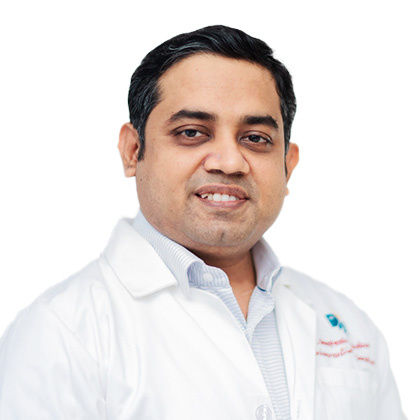
Dr. Deepesh Venkatraman
Cardiologist
10 Years • MBBS, MD (Gen Med), DM (Cardio), DNB (Cardio)
Chennai
Apollo Medical Centre Kotturpuram, Chennai
(75+ Patients)
Consult a Top Cardiologist for Personalised Advice

Dr. Tripti Deb
Cardiologist
40 Years • MBBS, MD, DM, FACC, FESC
Hyderabad
Apollo Hospitals Jubilee Hills, Hyderabad

Dr. Bhethala Sharan Prakash
General Physician/ Internal Medicine Specialist
5 Years • MBBS MD
Bengaluru
PRESTIGE SHANTHINIKETAN - SOCIETY CLINIC, Bengaluru

Dr. Zulkarnain
General Physician
2 Years • MBBS, PGDM, FFM
Bengaluru
PRESTIGE SHANTHINIKETAN - SOCIETY CLINIC, Bengaluru
Dr. Mahendranath Subramani Prasad
Cardiologist
16 Years • MBBS,MS ,DNB, M.Ch. Cardiovascular and Thoracic Surgery(Cardiology)
Bengaluru
Apollo Clinic, Sarjapur Road, Bengaluru

Dr. Deepesh Venkatraman
Cardiologist
10 Years • MBBS, MD (Gen Med), DM (Cardio), DNB (Cardio)
Chennai
Apollo Medical Centre Kotturpuram, Chennai
(75+ Patients)
More articles from Stroke
Frequently Asked Questions
1. Can a stroke be cured?
While there is no single 'cure' that reverses brain damage, emergency treatments can stop a stroke in its tracks. The brain has a remarkable ability to adapt and rewire itself (neuroplasticity) during rehabilitation, which can lead to significant recovery of function over time.
2. What is the difference between a stroke and a heart attack?
A heart attack is a blockage of blood flow to the heart muscle. A stroke is a blockage or bleed affecting the brain. Both are medical emergencies caused by problems in blood vessels.
3. What are the long-term effects of a stroke?
Long-term effects of a stroke vary widely depending on the stroke's severity and location in the brain. They can include paralysis, speech and language problems (aphasia), memory issues, emotional changes, and chronic pain.
4. How can you tell the difference between a stroke and a migraine?
Some migraine auras can mimic stroke symptoms like visual disturbances or numbness. However, stroke symptoms are typically sudden and maximal at onset, while migraine symptoms often develop gradually. When in doubt, always seek immediate medical attention.
5. What is the life expectancy after a stroke?
Life expectancy after a stroke has improved dramatically with modern treatment and rehabilitation. It depends heavily on the stroke's severity, the person's age, and their overall health. Many people live for decades after a stroke with a good quality of life.
_0.webp)
